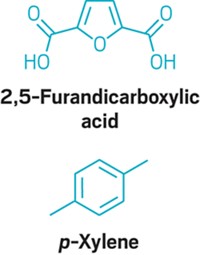Advertisement
Grab your lab coat. Let's get started
Welcome!
Welcome!
Create an account below to get 6 C&EN articles per month, receive newsletters and more - all free.
It seems this is your first time logging in online. Please enter the following information to continue.
As an ACS member you automatically get access to this site. All we need is few more details to create your reading experience.
Not you? Sign in with a different account.
Not you? Sign in with a different account.
ERROR 1
ERROR 1
ERROR 2
ERROR 2
ERROR 2
ERROR 2
ERROR 2
Password and Confirm password must match.
If you have an ACS member number, please enter it here so we can link this account to your membership. (optional)
ERROR 2
ACS values your privacy. By submitting your information, you are gaining access to C&EN and subscribing to our weekly newsletter. We use the information you provide to make your reading experience better, and we will never sell your data to third party members.
Business
A Rational Approach To Energy
by Marc S. Reisch
October 22, 2007
| A version of this story appeared in
Volume 85, Issue 43
"Energy is all about thermodynamics," says William F. Banholzer, Dow Chemical's chief technology officer. And that's why he's skeptical about using corn as a feedstock for chemical production or as a fuel source.
A century ago, the chemical industry depended on transforming coal and biomass into chemical products. But there is a simple reason why the industry shifted to oil- and natural gas-derived feedstocks, Banholzer says.
Oil and natural gas contain more energy than the chemicals produced from them, and more energy than an equivalent amount of biomass and coal. Oil and gas are also structurally closer to the plastics, solvents, and other compounds the chemical industry manufactures today. That makes them better feedstocks, Banholzer explains.
Making ethanol out of corn-based biomass looks like it might be a good deal, Banholzer acknowledges. After all, fermentation converts low-energy starch to high-energy ethanol. But in the process, fermentation yeast use up energy and throw off a pound of carbon dioxide for every pound of ethanol they produce. In addition, fermentation uses large amounts of water, generates a significant volume of solid waste, and produces a dilute ethanol stream requiring lots of energy to purify.
On the basis of energy content, ethane and corn cost about the same in the U.S., he says. However, ethane is a more efficient source of ethylene. A steam cracker routinely converts more than 87% of the carbon in ethane to ethylene. The use of corn starch to make ethanol and then ethylene converts less than 65% of the carbon in corn starch to ethylene.
To look at disparate products in equivalent terms, Banholzer likes to compare them on the basis of their energy content in British thermal units. Polyethylene sells for equivalent of $34 per million Btu. With a price of $35 per million Btu for corn-based ethanol (the price tends to fluctuate widely), a plastics maker cannot make a profit. With the cost of ethane in the U.S. equivalent to about $11 per million Btu, or even sugar-based Brazilian ethanol also at $11 per million Btu, a polyethylene maker using these sources of carbon can make a profit.
Other firms don't share Banholzer's reservations about corn as an energy and raw material source. A number of them have invested in corn-based chemical products. DuPont and sugar producer Tate & Lyle jointly manufacture 1,3-propanediol, a feedstock for the polyester polytrimethylene terephthalate, from corn. And DuPont is working with partners Novozymes and ethanol maker Poet to develop a cellulosic route to fuel ethanol, using the corn stover left over after harvest.
Metabolix, an industrial biotech firm, has hooked up with agricultural products processor Archer Daniels Midland to make polyhydroxyalkanoate plastics, also based on corn. And Japanese fibers maker Teijin recently agreed to buy a 50% interest in NatureWorks, a subsidiary of the agricultural products maker Cargill that makes polylactic acid (PLA)-based fibers and polymers from corn. Dow originally formed the venture with Cargill in 2002 but sold its share back to Cargill at a loss three years later.
Banholzer says Dow got out of the venture in part because PLA cost more and had poorer performance than the nylon and polyester fibers and plastics it was meant to replace.
Given the high price of corn today and the low yield of ethylene from corn, the use of corn as a chemical feedstock "is just stupid," Banholzer says. "You can't start with something where your energy and feedstock cost more than the product you want to sell. Financially, it doesn't make sense."
MORE ON THIS STORY
- In Hot Pursuit
- Dow's R&D leadership directs a global army pursuing lower raw material and energy costs
- Thermodynamics
A Rational Approach To Energy



Join the conversation
Contact the reporter
Submit a Letter to the Editor for publication
Engage with us on Twitter